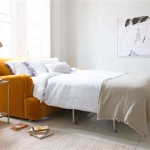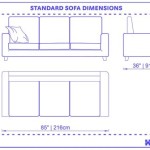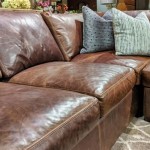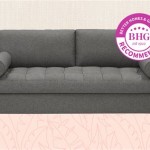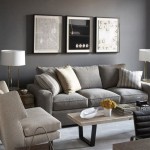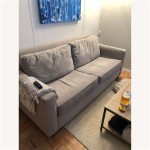Moroccan Style Sofas: A Guide to Bringing Exotic Comfort Home
Moroccan style sofas are renowned for their intricate designs, vibrant colors, and plush comfort. They offer a unique way to inject a touch of exotic elegance and warmth into any living space. From traditional hand-carved wooden frames to richly embroidered upholstery, these sofas represent a blend of artistry and relaxation.
One of the key features of Moroccan style sofas is their low, deep seating. Designed for lounging and relaxation, they often feature plush cushions filled with natural materials like wool or cotton. This low profile contributes to a relaxed, informal atmosphere, inviting conversation and comfortable gatherings.
The frames of authentic Moroccan sofas are typically crafted from dark, richly colored wood, often cedar or walnut. Intricate carvings, featuring geometric patterns or arabesque designs, adorn the frames, showcasing the artistry of Moroccan craftsmanship. These carvings are often done by hand, creating a unique piece of furniture that tells a story.
Upholstery choices for Moroccan sofas are diverse and contribute significantly to their distinctive aesthetic. Rich fabrics like velvet, brocade, and silk are common, often featuring vibrant colors and intricate patterns. Traditional Moroccan designs frequently incorporate geometric shapes, arabesque motifs, and ornate embroidery. These textiles contribute to the luxurious, opulent feel of the furniture.
Color palettes associated with Moroccan style sofas range from rich jewel tones to warm earth tones. Deep reds, blues, and greens are often found, alongside warm oranges, browns, and golds. These vibrant hues reflect the rich cultural heritage of Morocco and contribute to the warm, inviting atmosphere these sofas create.
The incorporation of decorative embellishments further enhances the unique aesthetic of Moroccan style sofas. Tassels, fringe, and decorative nail heads are frequently used to add a touch of opulence and detail. These embellishments highlight the craftsmanship and artistry that goes into creating these pieces.
Several distinct styles of Moroccan sofas exist, each with its own unique characteristics. The "riad" style, for example, is characterized by its low profile, plush cushions, and ornate carvings. The "berber" style often features simpler lines and incorporates woven textiles. Understanding these different styles allows for a more informed selection process.
When integrating a Moroccan style sofa into a room, several design considerations should be taken into account. The sofa’s size and scale should be proportionate to the room's dimensions. The existing color palette and décor style should also be considered to ensure a cohesive and harmonious look. Careful consideration of these factors ensures the sofa complements the existing décor rather than overwhelming it.
Maintaining a Moroccan style sofa involves specific care techniques. Regular vacuuming with an upholstery attachment is essential to remove dust and debris. Professional cleaning is recommended for deeper cleaning and stain removal. Protecting the sofa from direct sunlight and excessive moisture helps to preserve the vibrant colors and integrity of the fabric.
Sourcing Moroccan style sofas can involve exploring various avenues. Specialty furniture stores specializing in imported or handcrafted furniture often carry authentic Moroccan pieces. Online marketplaces offer a wide selection of both authentic and Moroccan-inspired designs. Antique shops and vintage markets can be excellent sources for finding unique, one-of-a-kind Moroccan sofas.
The price range for Moroccan style sofas can vary significantly depending on factors such as authenticity, materials, and craftsmanship. Authentic, hand-carved pieces made with high-quality materials tend to command higher prices. Mass-produced, Moroccan-inspired sofas offer a more budget-friendly alternative. Understanding the factors affecting price allows for informed decision-making based on budget and desired quality.
Beyond their aesthetic appeal, Moroccan style sofas contribute to creating a warm, inviting, and culturally rich atmosphere. They serve as a focal point, encouraging conversation and relaxation. The intricate designs and vibrant colors evoke a sense of exoticism and adventure, transforming a living space into a personal sanctuary.
The enduring popularity of Moroccan style sofas speaks to their timeless appeal. Their unique blend of comfort, artistry, and cultural significance continues to resonate with those seeking to create a unique and inviting home environment. They are a testament to the enduring beauty and craftsmanship of Moroccan design.
Selecting the right Moroccan style sofa involves careful consideration of various factors. Understanding the different styles, materials, and price points available allows individuals to make informed choices that align with their aesthetic preferences, lifestyle, and budget. The result is a piece of furniture that not only enhances the beauty of a home but also provides a comfortable and inviting space for relaxation and enjoyment.

Guide To Moroccan Furniture Morocco Travel

Moroccan Style Sofa In Reclaimed Wood Eclectic Living Room Los Angeles By Tara Design Houzz Ie

Guide To Moroccan Furniture Morocco Travel

Guide To Moroccan Furniture Planet Marrakech

Moroccan Design Sofa Floor Seating Living Room

25 Top Collection Moroccan Style Sofa Most Comfortable Bed Living Room Furniture

Moroccan Interior Design Influence Style Elements Study Com

Moroccan Sofas Sofa Bed Day Decor Furniture

Moroccan Interior Design Ideas For Your Home Designcafe

King Moroccan Lounge Marokech
Related Posts

